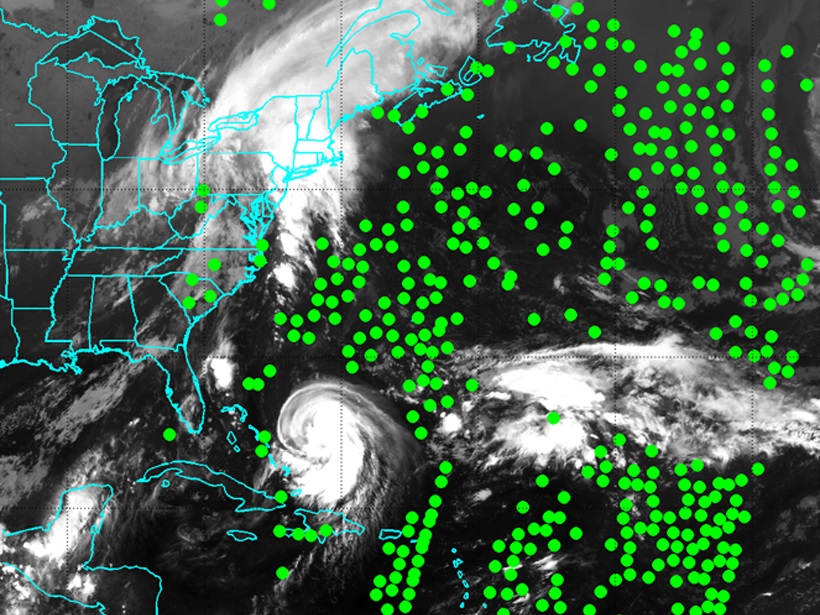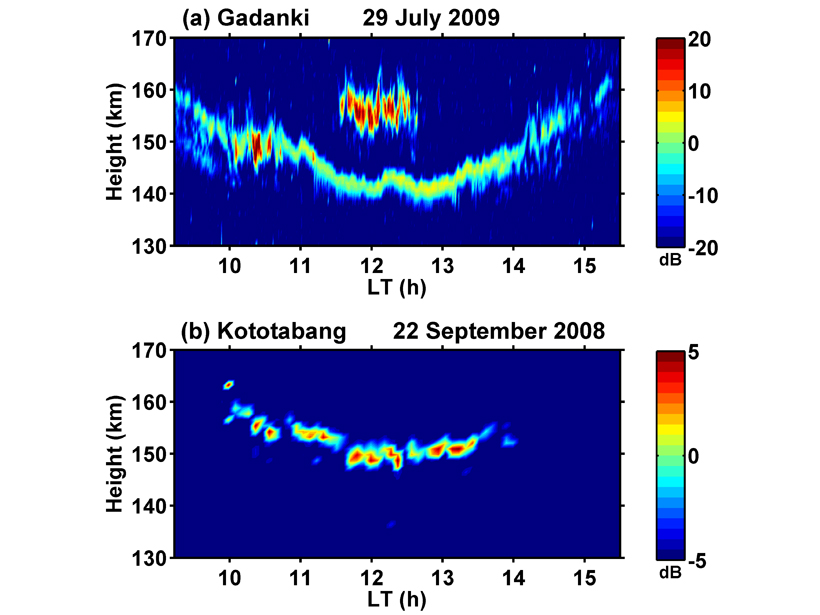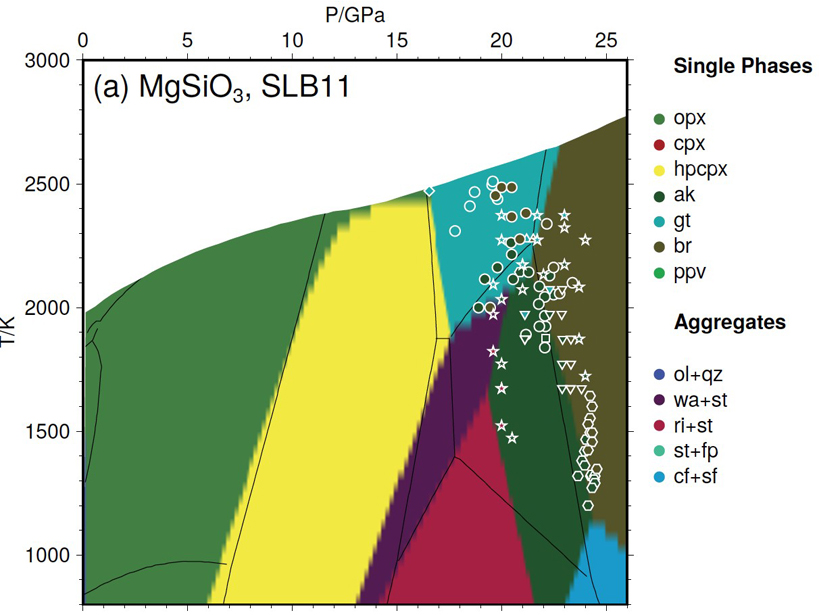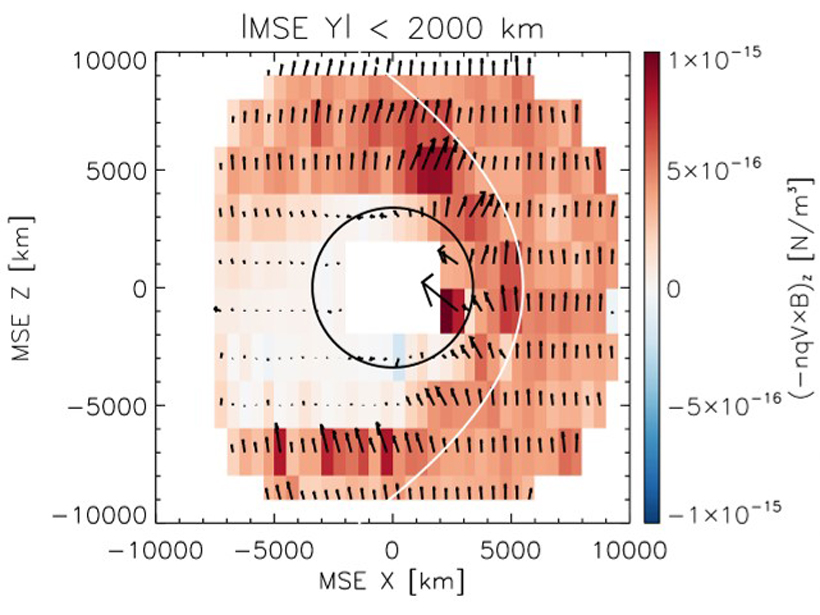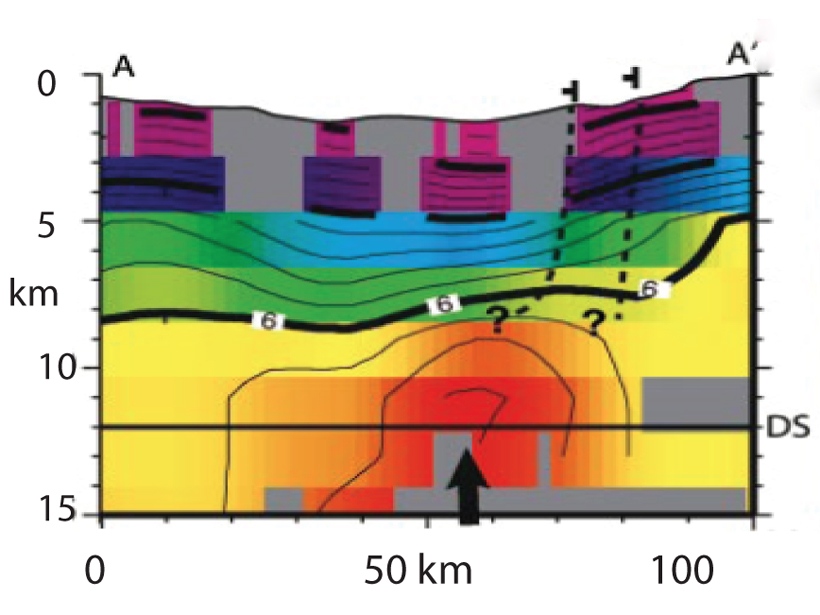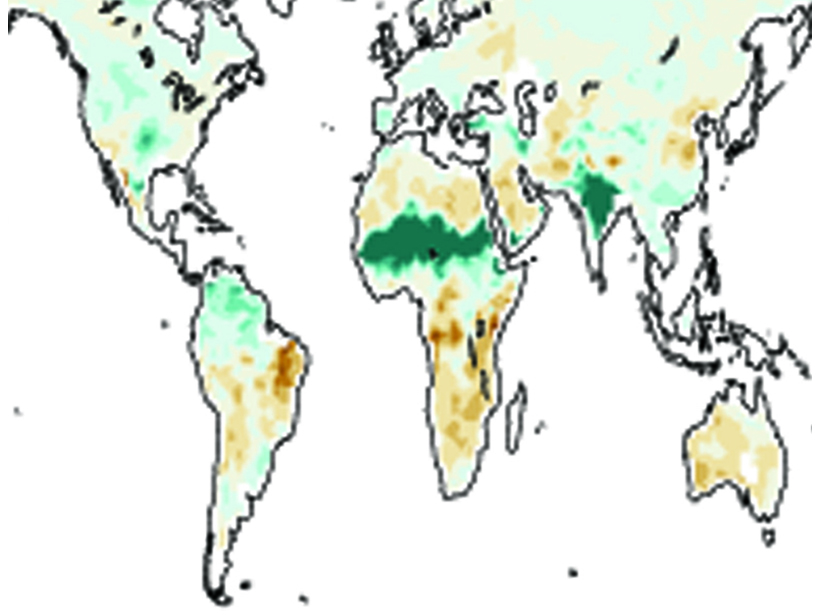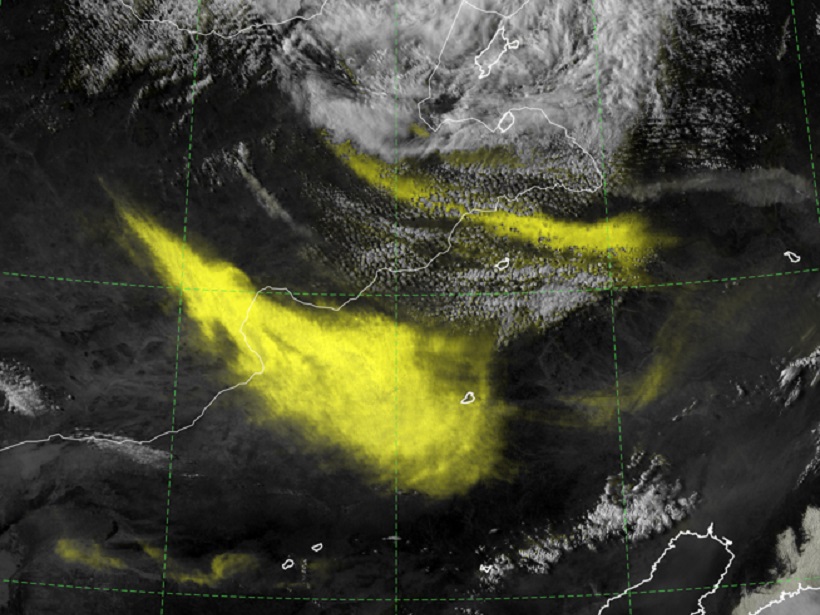The assimilation of cloud-cleared infrared data improves numerical weather forecasting, especially for hurricanes, by providing thermodynamic information in cloudy atmosphere.
Editors’ Highlights
New Observations of Mysterious Radar Echoes
Exploring the relationship between solar extreme ultraviolet radiation flux and 150-km radar echoes.
New Thermodynamic Model for Computing Mantle Mineralogy
A newly developed open-access software package called MMA-EoS can calculate whole mantle mineralogy in multicomponent systems by Gibbs energy minimization.
Where the Solar Wind Meets Mars
A comprehensive look at how the solar wind is diverted around Mars, including the relative strength of the three biggest forces at work in this region.
The Many Magmatic Modifications to the African Continent
How the very slow moving African Continent, with a lithosphere of quite varied age elements and thickness, has responded to ongoing asthenospheric modification.
Wet Soils Elevate Nighttime Temperatures
Soil moisture can elevate overnight temperatures, offsetting daytime cooling, especially over areas of strong land-atmosphere interactions.
The “Magnetic-less” Magnetotail Boundary
Most boundaries in space are governed by magnetic fields, but not far behind the Earth, where the field change across the magnetopause plays very little role in the pressure balance relationship.
Addition by Subtraction: Raising the Bar for Satellite Imagery
When it comes to forecaster analysis of complex satellite imagery, less can be more, and a new technique aims to simplify imagery interpretation by suppressing the background noise.
Comparing the Accuracy of Geomagnetic Field Models
Improved accuracy and optimization of models could benefit many applications.
A Survey of Solar Radio Burst Statistics
National solar radio archive records have substantial missing data potentially affecting the ability to benchmark extreme solar events.

